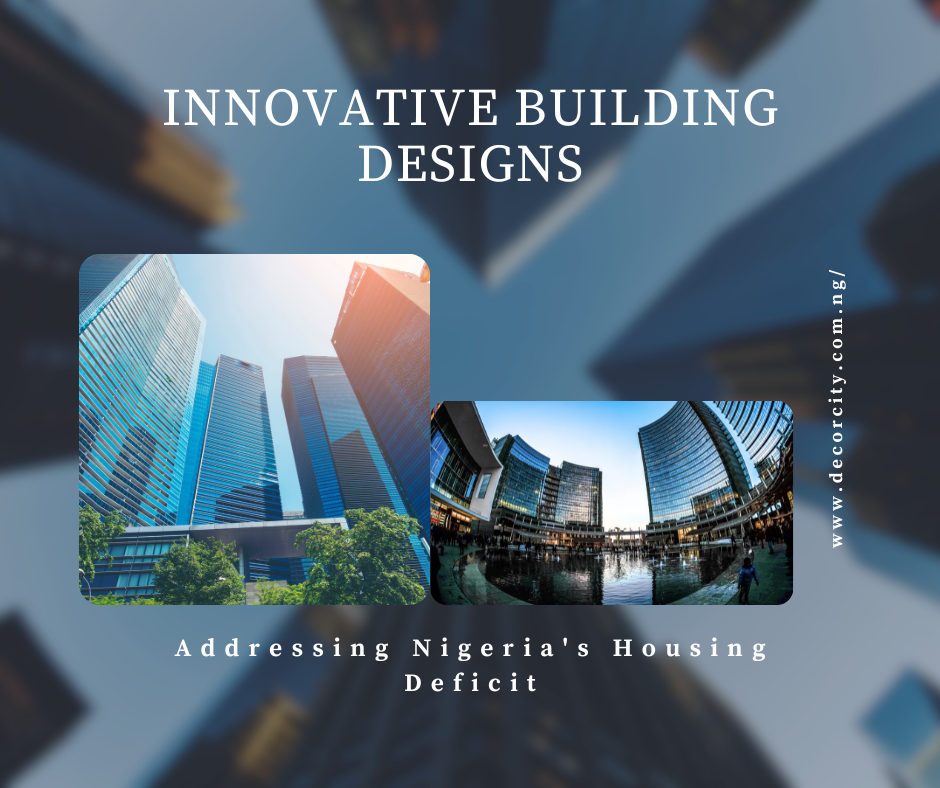Real Estate in Nigeria
Innovative Building Designs to Address Nigeria’s Housing Deficit
Nigeria’s housing deficit remains a significant challenge, with a growing population and an increasing demand for affordable homes. Innovative building designs can play a crucial role in addressing this deficit by providing sustainable and cost-effective solutions. In this blog post, we will discuss some innovative building designs that can help tackle Nigeria’s housing deficit, offering viable options for affordable housing.
Modular Construction:
Modular construction is gaining popularity worldwide due to its efficiency and cost-effectiveness. This building method involves constructing individual modules or sections off-site and then assembling them on-site. The benefits of modular construction include reduced construction time, lower labor costs, and minimal waste generation. By adopting modular construction techniques, developers can quickly construct affordable housing units to meet the growing demand in Nigeria.
Sustainable Materials:
Incorporating sustainable materials into building designs is essential for both environmental conservation and long-term cost savings. Bamboo, for example, is a fast-growing and renewable resource that can be used as a building material. It is durable, lightweight, and offers excellent insulation properties. Other sustainable materials include recycled materials like reclaimed wood or recycled plastic. By utilizing such materials, builders can reduce their carbon footprint and create affordable, eco-friendly housing options.
High-Rise Building Designs:
With limited available land, high-rise building designs can provide an effective solution for maximizing space utilization and accommodating more residents. High-rise buildings not only offer increased housing capacity but also provide opportunities for incorporating community spaces, amenities, and shared facilities. Developers can design multi-story apartment buildings that cater to the needs of different income groups, ensuring a mix of affordable housing units and premium options.
Compact Living Spaces:
Compact living spaces are gaining popularity in urban areas where land is scarce and expensive. These designs focus on optimizing space by incorporating multi-functional furniture and efficient storage solutions. For example, convertible sofas that double as beds, foldable dining tables, and wall-mounted storage units can maximize living areas. Compact living spaces allow for affordable housing options without compromising on comfort and functionality.
Green Building Design:
Green building design emphasizes energy efficiency, water conservation, and sustainable practices. By integrating renewable energy sources like solar panels, energy-efficient appliances, and rainwater harvesting systems, developers can create environmentally friendly housing solutions. Additionally, incorporating natural lighting and ventilation techniques can reduce energy consumption and improve indoor air quality. Green building designs not only contribute to a sustainable future but also offer long-term cost savings for homeowners.
Conclusion:
Addressing Nigeria’s housing deficit requires innovative building designs that offer affordable and sustainable solutions. Modular construction, sustainable materials, high-rise buildings, compact living spaces, and green building designs are all viable options for tackling this challenge. By adopting these innovative approaches, developers can provide affordable housing units that meet the needs of Nigerian communities while also considering environmental impact and long-term cost efficiency. By embracing innovative building designs, Nigeria can move closer to bridging the housing deficit and providing homes for its growing population.

